Pony Star
The 2015 Mustang GT sets a new standard for pony car prowess, but the real star is the Performance Pack
By Steve Turner
Photos by Steve Turner and courtesy of Ford Motor Company
By now we all know that Ford redesigned the iconic Mustang for a new generation of drivers, both domestic and abroad. In addition to its revitalized styling the 2015 Mustang marks the return of an independent rear suspension to the pony car. It also features a varied lineup of powertrain options in the all-new chassis.

Getting behind the wheel of one of the most hotly anticipated new Mustangs has been on your author’s mind from the moment I sat in a life-size model of the car in Ford’s design studio. After waiting nearly a year to experience the real thing, I was thrilled to hop in a plane and fly to Hollywood, California, and accept Ford’s offer to drive the 2015.

When the time finally came, there were too many possible cars to experience in the short time of my visit with the latest Mustang. As such, when the chance to pick out the first car to experience arose, I went straight to the head of the class and grabbed the remote for a Performance Pack-optioned Mustang GT. After all, this is SVTP and all of us here are inclined to want maximum performance. Seeing what the Ford’s headlining performer has to offer sets the stage for what we’ll be able to enhance later on.
Now, before we get behind the wheel, it is important for me to come clean on my feelings about the independent rear suspension. I was not part of the chorus of detractors of the outgoing car’s “antiquated†solid rear axle. Instead, I marveled at how far Ford’s engineers had taken that technology, and I appreciated its lighter weight and simplicity. I also know that, for most Mustang fans, going quick in a straight line is more important than carving corners.
That’s not to say I don’t recognize that an IRS offers some benefits on both the street and on a road course. Yet, I also know that there are always tradeoffs. The question remains how those tradeoffs will play out for enthusiasts.

So, sliding into the interior of a real, live 2015 had my senses heightened. I was ready to see what all the fuss was about. However, the car didn’t feel foreign at all. Simply strapping in, and I felt right at home. This is a Mustang interior—the best Mustang interior yet. The sculpted dash and optional Recaros truly make you feel like a street fighter pilot, and touches like improved legroom and streamlined console heighten its drivability.
Unlike that life-size model, this was the real deal, and after buckling up it was time for a push-button start. Yes, the Mustang has entered the modern era. Finally, having the remote in your pocket means touching the door handle unlocks the car, and pushing a button on the dash starts it—just like other Fords.
Starting it brings the improved, 435-horsepower Coyote burbling to life. On the outside of the car, it sounds great, but inside with the windows rolled up, the exhaust is muted. This demeanor belies its performance. Enhanced courtesy of lessons learned from the Boss 302 program, this Coyote is an even closer cousin of the RoadRunner.

That said, the Coyote experience is familiar to those who have run with the pack since 2011. With a wide powerband and a 7,000-rpm redline, this 5.0-liter engine is at home grunting through traffic or twisting the tach. However, despite its 15 horsepower/10 lb-ft advantage over its S197 predecessor, the power is muted by the extra 87 or so pounds carried by the new Mustang. For those of us weaned on forced induction, more power is always a battle cry, but it’s the rest of the car’s attributes that lift the 2015 Mustang GT above its predecessors.
For the straight-line crowd, it might pose some challenges, once we escaped the confines of the city, we took the opportunity to drop the hammer and see how the IRS takes to a drag launch. Well, there was a little wheel hop as the tires spun desperately in search of traction. It was controlled hop, but it’s there. Not that stock solid-axle cars are completely free of bounce, but those wanting beat the world at the drags might need to do some suspension tweaking, especially with beyond-stock power.

However, as we navigated the twisty environs of the Angeles Crest Highway, which winds through the San Gabriel Mountains and the Angeles National Forest, the Performance Pack Mustang GT showed why it is at the top of the heap. As I took the first hint of a sweeping turn, my passenger/mentor Tom Wilson immediately noted the car’s responsive handling. The turn-in was sharp. He said with a hint of surprise, “That felt good.â€
His impression set the stage for one of the most enjoyable mornings of Mustang driving we have shared in our years in the media. Let’s just get it out of the way, the Performance Pack GT does handle better than the 2012-2013 Boss 302. It’s true. Whether or not it is faster remains to be seen, but it wouldn’t be a surprise.

In recent years, engineers have told us they wanted to created a Mustang that makes an average driver feel like a hero. With this car, they have realized the dream. Many will credit the car’s sea change of handling to the IRS out back, and it definitely plays its part. This car effortlessly glides through the transitions and simply goes where you want it too, but the way it turns in is a result of that under-appreciated double-ball joint front suspension. A late addition to the program, the DBJ front and the IRS are true team players, working in concert like a symphony.
Of course there is always a trade-off. Ford engineers don’t throw NVH concerns out the window on a Performance Pack car, but they do place a higher importance on performance. (As they should!) However, that does mean you give up a bit of ride quality, especially a lower speeds on rougher surfaces. However, at highway speeds the car seems to soak in the road surface better the faster you drive.
During the brief media drive we didn’t get the opportunity to drive all the possible configurations on the challenging roads, but we were able to take a spin around the block in a base GT. We can confirm that it definitely exhibits the smoother ride quality you might expect from an IRS car. We can also extrapolate—based on driving the EcoBoost PP, which is lighter but carries the GT suspension—that the base car won’t make you as big a hero in the corners. There is definitely a place for both configurations. It just depends on your needs.
Perhaps the most exciting thing about the 2015 Mustang is that it is just the beginning. Think how far the S197 platform progressed from 2005 to 2014. We can only hope that Ford’s dream team of engineers stays together to iterate this new platform to heights we can only imagine at this stage. For now, let’s just appreciate how good we have it.

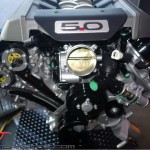

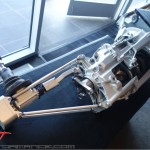
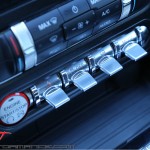
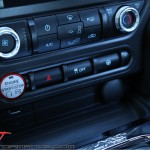
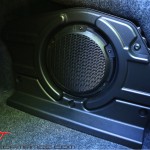


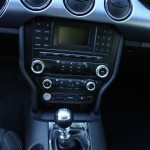
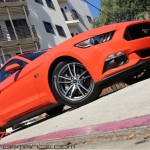
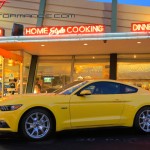
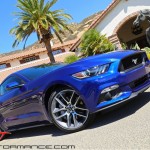
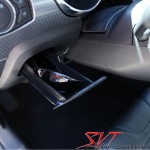
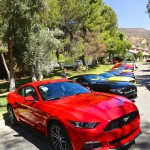
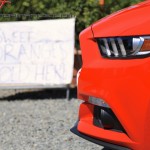
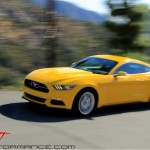

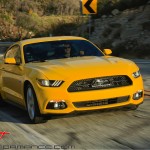

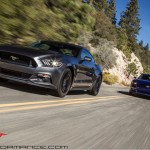
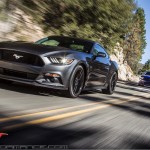
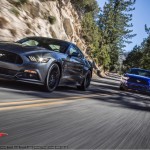
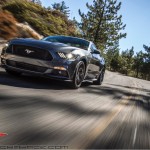
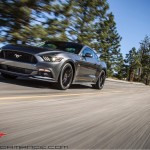
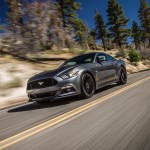
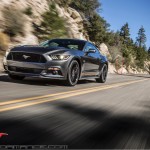
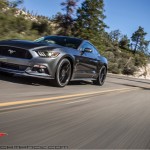
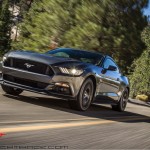
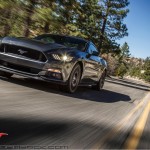
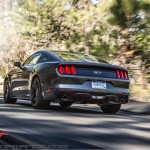
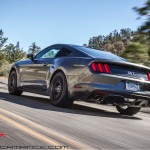
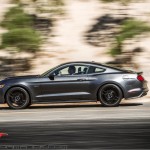
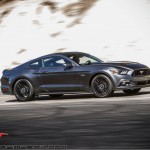
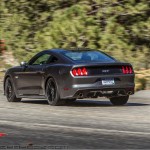

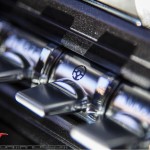




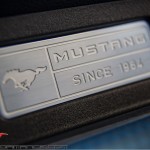


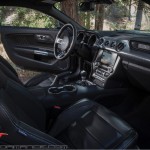
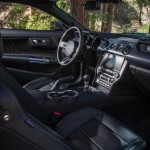
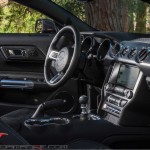
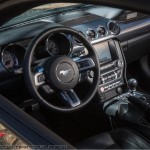
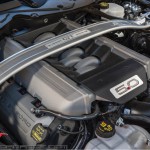
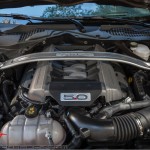
Great article Steve. I’m really looking forward to getting a 15 Mustang on the track.
Great Article Mr. Turner!
http://thesource.com/wp-content/uploads/2014/05/youtherealmvp.jpg
Thanks for the kind words.
Should be interesting to see the market going forward. In 2003-04 the dragstrip cobra guys could always swap in a GT axle. Now they’re stuck with IRS.
The other thing that got me thinking was the line about the “antiquated” solid axle. Sounds a lot like the “antiquated” pushrods in the GMs.
Nice article Steve. I can’t wait.
First off Steve, excellent writeup from a mechanical perspective. Crisp, clear photography and superbly done videos. I smiled when I saw the MT82 on its side, as I know you know we want more here at SVTP. I was also glad to see that Wilson hasn’t gone anywhere as I just don’t hear of him as much as in the past and i loved everything he’s written for many years.
Regarding the car, as with many, the shape is growing on me. It happens with every new iteration. When you park an S550 next to an S197 the older car looks rather dated, to put it nicely. That said, the somewhat curvy/bulbous S550 body is absolutely begging for more wheel/tire. Even the largest combination shown in your photos reminds of the ancient TRX sized rubber from long ago. I can’t wait for the truly “phat” factory rolling stock that has shown up on Ford’s Parts website to arrive. The proportions of the new car are begging for it.
One of your captions stated…
Are they supposed to be the same number?
You noticed it right away. FRPP will soon have parts available that are said to specifically address the issue.
http://www.svtperformance.com/wp-content/uploads/2014/09/2-2015-Mustang-FRPP-Parts.jpg
Can you go a little more in depth about it? Does it somehow not rear its head when using the factory “line lock” but somehow does show up under certain dynamic conditions?
But again, great job.
Tob
The auto computer code has a 2 at the end, Tob. Sorry for the slip-up.
As for the hop, I’d guess all that computer power helps when the line lock is engaged.
I really like the sunglasses storage.
Steve,
Did you get a chance to drive the EB PP on Angeles Crest as well? If so could you tell much difference in handling based on the weight differences?
I did, indeed, drive the EcoBoost PP for a shorter time on Angeles Crest, but that’s a tale for another story…
Thanks for all the info!!